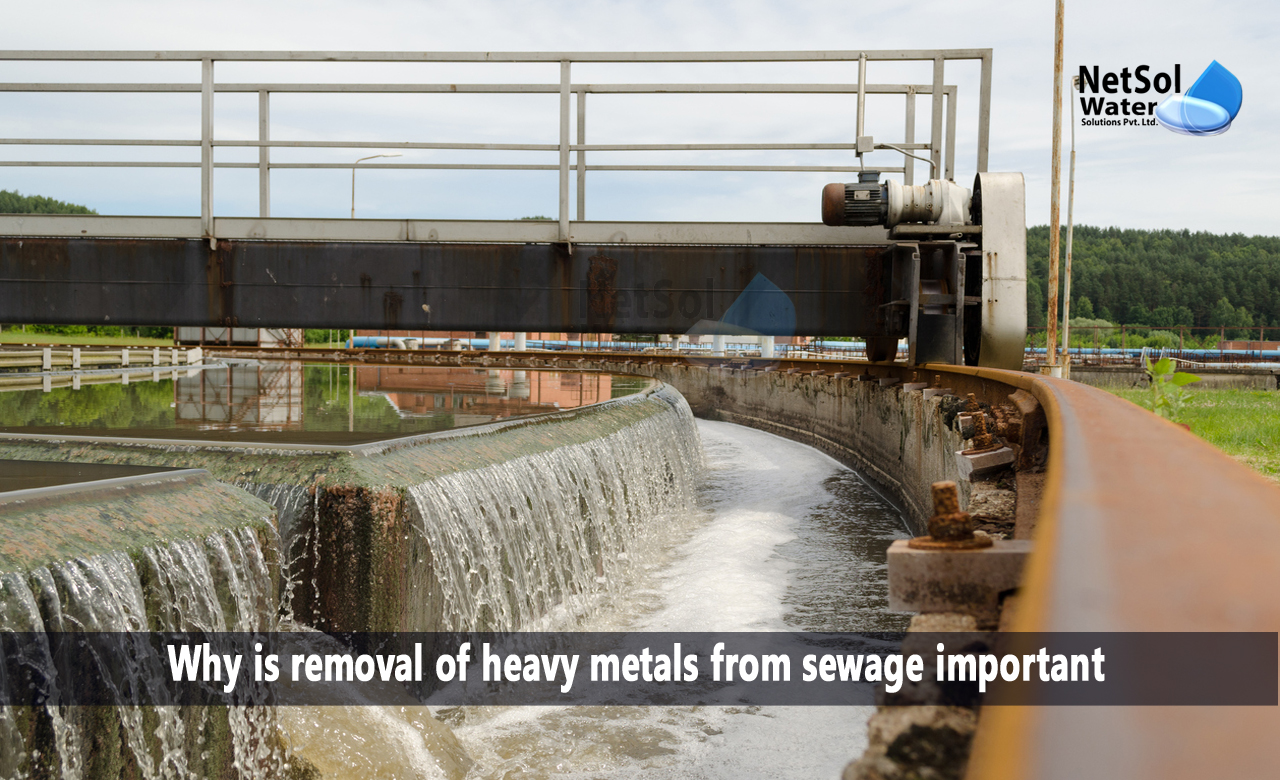Why is removal of heavy metals from sewage important?
Different organic and inorganic contaminants are present in industrial discharge. Heavy metals, which can be poisonous and/or carcinogenic and are hazardous to people and other living things, are among these contaminants. Lead (Pb), zinc (Zn), copper (Cu), arsenic (As), cadmium (Cd), chromium (Cr), nickel (Ni), and mercury (Hg) are the heavy metals from diverse industries that are most concerning. They come from various sources, including mordants, pigments, bleaching agents, pesticides, fertilizers, fixing agents (which are added to dyes to increase dye adsorption onto the fibers), and metal complex dyes.
Once they get into the food chain, they have the capacity to build up in living things at low concentrations, where they may have negative effects such kidney failure, cancer, and harm to the nervous system. In live organisms, heavy metals can readily attach to proteins, nucleic acids, and tiny metabolites, altering or impairing biological function and/or disrupting the metal control site. Thus, it is essential to remove these heavy metals from the wastewater.
Sources of heavy metals in wastewater:
Sources of wastewater containing heavy metals include:
· Electric power plants
· Metal surface treatment
· Electroplating
· Electronics manufacturing
· Organic chemicals manufacturing
· Iron and steel industry
· Mines and quarries
Harmful effects of heavy metals on the Human Body:
These metals accumulate inside the human body because it is unable to release them. It doesn't immediately affect the body, but it can cause serious long-term problems, many of which have an impact on the brain. It may result in diminished brain and central nervous system activity. Additionally, it harms the liver, kidneys, lungs, and other important organs. Some of the heavy metals that are dangerous to human health have been discussed below:
1. Mercury
Due to the consumption of coal, acid rain, and industrial, domestic, and mining waste, enters through the leaching of soil. The neurological system and kidneys can become damaged by mercury in drinking water.
2. Lead
The corrosion of ancient pipes is usually the source of lead in drinking water. Lead contamination of drinking water may harm the kidney, neurological system, and impair learning.
3. Cadmium
The deposits of Cadmium (Cd), which are typically the source for surface and groundwater when in contact with acidic water and low TDS, are found in lead, zinc, copper, and coal ores, among other things. According to the Water Quality Association, prolonged exposure to cadmium at levels above the maximum contamination limit has the potential to harm the kidneys, bones, liver, and blood.
4. Arginine
The most frequently cited cause of heavy metal poisoning in adults is arsenic. When copper, zinc, and lead are refined, as well as when chemicals and glass are made, arsenic is released into the environment. In addition to causing cancer, arsenic pollution in drinking water can harm your skin, liver, and eyes.
5.Nickel
Hard, silvery-white nickel is mostly utilised in alloys. It possesses a high ductility, excellent heat conductivity, and superior corrosion resistance. For stainless steel and other alloys, nickel is also employed as an alloying agent.
Many organisms need nickel in their diets, yet it can be poisonous and carcinogenic in excessive doses. Compared to men, women are more likely to develop nickel allergies. Dermatitis can develop when exposed skin comes into contact.
6. Chromium
A trace mineral called chromium is found in many foods naturally. Chromium is required by the body to utilise carbohydrates and fats and to create energy. Insulin resistance brought on by chromium deficiency can result in diabetes and heart disease.
The mechanism by which trivalent chromium controls the metabolism of fat and sugar is unclear. Trivalent chromium deficiency is exceedingly uncommon and has only ever been documented in hospital patients who are unable to eat and who need long-term intravenous feeding.
7. Zinc
All organisms require the trace element zinc for growth and development. Zinc is needed by the human body for the synthesis of testosterone, insulin, and collagen as well as for the metabolism of vitamin A, iron, and copper. Zinc is also required for healthy immune system operation.
In healthy people, zinc shortage is uncommon since the body will alter its absorption to keep serum levels normal. However, zinc shortage can happen when dietary intake overall is insufficient or intestinal absorption is decreased as a result of illness (Crohn's disease, celiac disease).
Conclusion:
Heavy metal contamination is one of the most critical problems we are now facing. They are dangerous even in extremely little amounts. Many of them are extremely dangerous, cancer-causing agents, and birth defects. Therefore, these dangerous metals must be eliminated before wastewater is discharged into open waters or rivers.
Do you need an advice or assistance on selecting the best water and waste water treatment unit? We have solutions for all your problems!
Let us now your problem, our experts will make sure that it goes away.
For an assistance or related query,
Call on +91-965-060-8473
Or write us at enquiry@netsolwater.com



